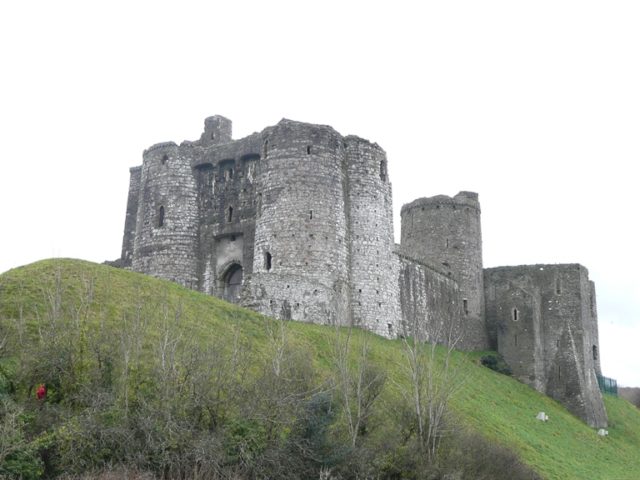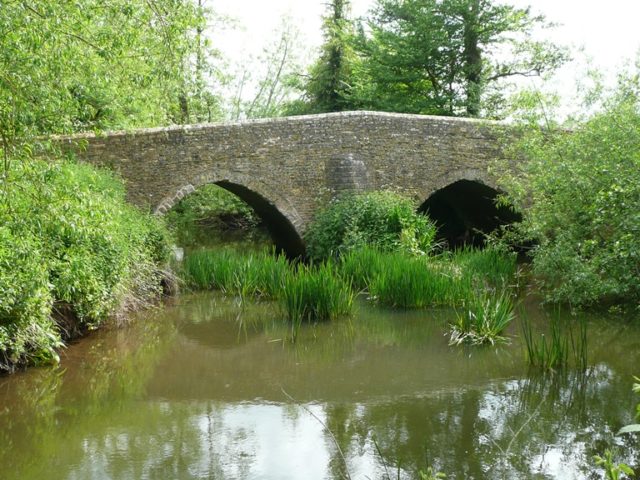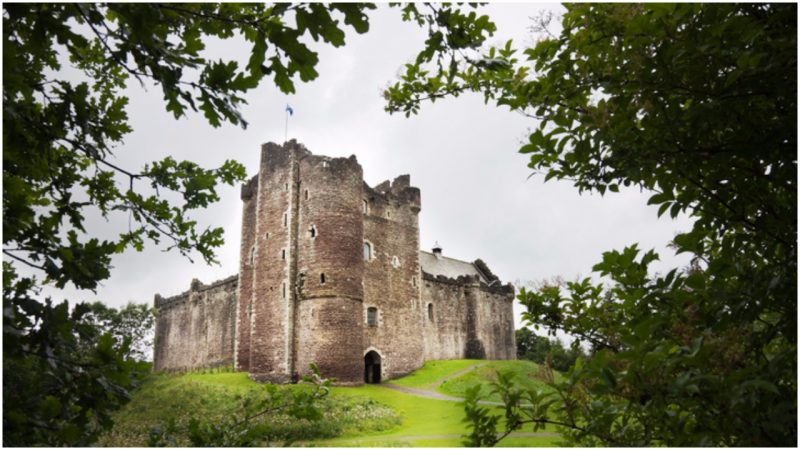As a lifelong Monty Python fan, I had always liked the idea of visiting the locations used in their films. It would also be a a good excuse to explore various parts of the country and enjoy dramatic landscapes that look magnificent regardless of the weather.
The most obvious location is Doune Castle in Scotland. Most Python fanatics know this is the main location for Monty Python and the Holy Grail.
Due to the Scottish Department of the Environment deciding at the last minute not to allow the Pythons to use their castles (apparently making a comedy film there would “not be consistent with the fabric of the building”), the privately owned Doune Castle saved the day, and by using different angles, appeared as several locations in the movie. So the first time I made the Python pilgrimage, Doune was the obvious first target. But not everything was shot as far north as you might think.
In the opening scene, Graham Chapman as King Arthur and Terry Gilliam as Patsy are galloping with their coconuts and arrive at a mud mound on London’s Hampstead Heath. They then appear to look at a castle swirling in the mist.

This castle clearly does not match the profile of Doune, so I could see a little detective work was required. I had read that the production had grabbed some pickup shots outside of the main shoot. So, armed with a screen capture from the film, I began trawling the internet for castle databases to match against what was shown on screen. Eventually the match was found in Wales in the form of Kidwelly Castle, located west of Swansea.

The Kidwelly location is only used for the establishing shot of the first castle. It is shown just before King Arthur rides closer and a cinematic sleight of hand makes the switch to Doune, just before they get famously taunted by the French on the battlement: “I fart in your general direction,” etc. This discovery meant I was off to South Wales to tick this more obscure film location off the list. Aside from the fun of solving the puzzle, it was also nice to visit a small town that I may not have otherwise encountered. I was also aware that these lesser known (or unknown) locations are still an essential part of the movie, but are far beyond what the casual film goer would be interested in. I was determined to go for both a sense of completion and the novelty value of a trip that most people would never muster the enthusiasm to make.
Grabbing establishing shots in Wales would not be the last time that members of the Python team would use the country. Terry Gilliam visited Chepstow and Pembroke Castles for his wonderfully grimy production of Jabberwocky. The design for Gilliam’s Brazil was partly inspired by Port Talbot’s early 1980s seafront (when it was in much worse condition than it is today), and the battle finale of Jabberwocky was filmed in a slate quarry close to Bosherston, near the Welsh south coast. As a fan of much of the related work, I installed in myself the ambition to solve some of the other film location questions that had a Python connection.

Gilliam’s Time Bandits was the first movie I saw as a youngster that really blew my mind. It showed amazing locations and the characters were so unlike what was normally presented onscreen in terms of what kids can be like (on the excellent DVD audio commentary for Time Bandits, Gilliam makes a point of saying how much he hates traditional movie children, because they rarely behave like real children). Also the sheer inventiveness and spectacular fun of jumping through time to different periods in history to cause mischief made for an ever-changing and exciting cinematic adventure.
As an adult, I sought out the illustrated script book for Time Bandits that was published during the original release. Aside from the screenplay, it contains lots of photographs, including images of scenes that no longer appear in the final cut. One deleted sequence shows the gang stealing a wooden crate from a bridge to use as a boat so they can sail downstream and encounter Napoleon (at another Welsh castle in Raglan). The released version of the film shows a single shot of the bridge before one character suggests they can use the river. In high-definition versions you can make out the gang under the arc of the bridge in that single shot, the remnants of that mostly excised scene. The location of the bridge is not mentioned in the DVD materials or the press kit, but I was determined to find it.
Employing the same methods that took me to Kidwelly, I started to look for bridges on the Internet and worked out that this type of bridge was known as a packhorse bridge. The use of a countrywide bridge database allowed me to begin the process of location elimination and meant the majority of candidates could be quickly discounted. Eventually one image seemed to look familiar. It was not taken from the same angle used in the movie, but something about it looked right. However, I needed to see it properly to be sure, and unfortunately, there was no other pictorial evidence. At least it was captioned with the river that flowed under it and maps showed it hosted a functioning road. It is often easy to check traffic locations using the excellent Google Streetview, but many minor country roads are not covered. This discovery meant I was off to Keynsham, near Bristol. The target lane was more of a dirt track than a road, but as I approached with echoes of Kidwelly in tow, I felt a sense of achievement in solving a seemingly impossible location task.

A few months later I had the opportunity to ask Terry Gilliam in person why none of the deleted scenes shown in the screenplay for Time Bandits had appeared on the various DVDs or Blu-ray releases of the movie. He said that unfortunately the original footage seems to have been lost and that the only imagery that exists are those in that published book.
Although I still hope that the lost sequences may turn up somewhere, at least I satisfied my own curiosity of not only working out where the location was but also going to visit it for myself. The location trail has taken me on some fun little trips, but I was also determined to solve some of the other remaining Python locations, including a rare one from the Holy Grail film that would take me back to Scotland…
——————————————————————————————————
Dave Wilson lives in Cornwall, has written film review columns for Cornish newspapers and has met all but one of the surviving members of Monty Python. He spends a lot of his spare time in the cinema and is quite happy to ask questions in auditoriums packed with people when it is on a subject he is passionate about.
